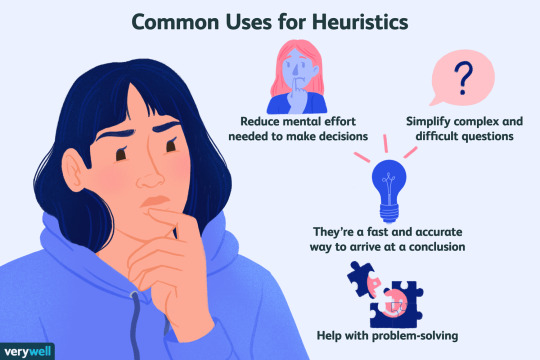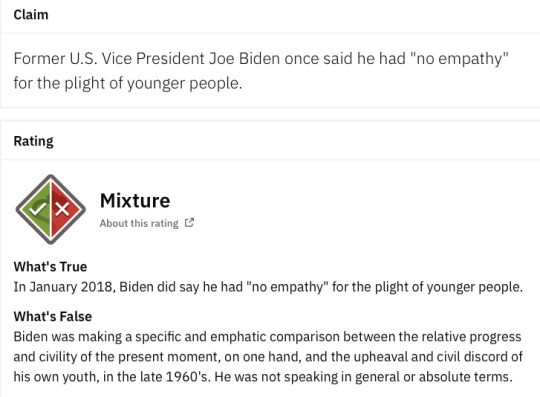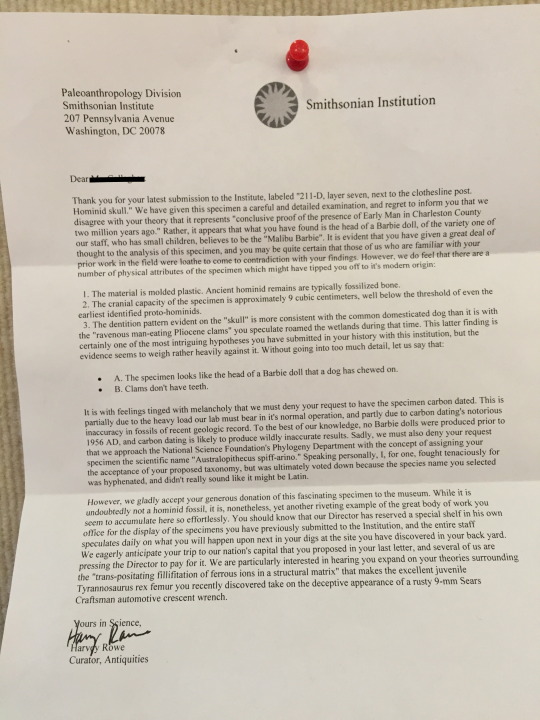#Barbara Mikkelson
Explore tagged Tumblr posts
Text
Pins and Needles in Halloween Candy
Pins, needles and razor blades been occasionally been found in trick-or-treaters' loot over the years. by: Snopes Staff &Barbara Mikkelson OriginAlthough random Halloween candy poisonings are confined to the realm of urban legendry, many actual cases of tampered trick-or-treat loot involving the insertion of pins, needles, or razor blades have been documented.These cases constitute a different class of tampering than poisoning for a couple of reasons. First, the expected level of harm is severely reduced: poison is an attempt to kill; a pin in an apple is an attempt to frighten or injure. Professor Joel Best reported that he was able to track about eighty cases of sharp objects in food incidents since 1959, and almost all were hoaxes. Only about ten culminated in even minor injury, and in the worst case, a woman required a few stitches. Compared to "eat something and die," a couple of stitches barely registers on the scale.Second, the motivation for "pins and needles" tampering is different. As I said before, poison is an attempt to kill, but hiding a needle in an apple is almost always a prank, not a serious attempt to cause harm. (In those instances where such an insertion could be traced back to a specific person, it was almost always some kid intent on freaking out either his little brother or his parents or getting the community in an uproar as his version of a cute Halloween "trick"). Pranking (especially when it's a scary or slightly mean one) is part of Halloween, and the various kids or young adults who've tampered with treats most likely never fully considered the potential consequences of the joke prior to embarking on it. (When presented with a matchless opportunity to throw a scare into a pesky kid brother, who stops to think that Junior might get hurt?)According to the Minneapolis Star Tribune, an incident that broke with this expected pattern occurred in Minneapolis in 2000, when 49-year-old James Joseph Smith was charged with one count of adulterating a substance with intent to cause death, harm or illness after it was determined he'd put needles in Snickers bars and handed them out to children on Halloween. A 14-year-old boy was pricked by a needle hidden in a bar he'd bitten into, but no one required medical attention.According to reporting found later in December 2000, Smith was perhaps on his way to an institution for the "mentally ill" after he was deemed "incompetent for trial."

2 notes
·
View notes
Text
UNIT 10: Decision Making on the Internet

Should You Believe That Rumor?
Many people believe rumors they hear spread around social media. From Coca-Cola still having cocaine in the recipe to Michael Jackson still being alive, many people fall for the first thing they see without doing any fact checking of their own. Nowadays, there is a site to do the fact checking for you. Snopes.com, created by David Mikkelson, helps internet users check rumors they hear online to determine if they are actually true.

The site originally started as Alt.folklore.urban, which was a place for people who enjoyed collecting, sorting, and organizing facts. For its first 7 years of existence, the site was mostly a hobby for David and his wife Barbara, conducting experiments and writing articles in their home while still working their day jobs. After 9/11, however, the site grew exponentially. The Mikkelsons started debunking theories about what caused the attacks, and the press took interest. The success let them hire more researchers, writers, and editors. They also started debunking political rumors, such as Obama's fake birth certificate.
Their site provides detailed explanations about a rumor rather than a 'yes' or 'no' answer, the real world is more complex than a black and white answer. snopes.com has become a reputable source for fact checking rumors, it is even endorsed by school librarians as a reliable source. Next time you hear something and you're not sure if it's true, double check with snopes.com.
Motivation in Travel

The internet has allowed people to plan their travel instead of using travel agents or travel guides. A study on how travel motivations affects internet use before, during, and after a trip found that the young, well-educated and affluent tend to be the first movers in taking advantage of the internet.
the Jensen & Hjalager (2013) article “The Role of Demographics and Travel Motivation in Travelers’ Use of the Internet Before, During, and After a Trip.” The purpose of their study was to depict how and to what extent travelers use the internet for collecting and sharing travel related information. They wanted to study this because "there is a remarkable lack of of insight into the relationship between travel motivations and online search behaviors. They used an online questionnaire to measure respondents travel motivations, their search for travel information, and their specific internet use before, during, and after their trip.
They found that there were 8 prominent motivational factors for travel: family/friends relationship, escape/relaxation, food experience, experience new culture, nature experience, shopping, sun and beach, and status. They also found that the motivation for traveling seemed to influence their online search methods prior to choosing a destination. Before the trip, online searching was prominent for finding accommodations and booking flights, whereas online use during the trip switched to finding attractions and excursions at the destination. Online use also decreased during the trip, travelers used more offline sources instead.
They also found that social media use after returning home was prominent among the young generation and was more popular among women than men. These conclusions make sense to me because people will spend a lot of time preparing for a trip, but they don't want to spend a lot of time online while on their trip because they are afraid they'll miss things by being on their phone.
Heuristics

A heuristic is a mental shortcut that allows people to solve problems and make judgements quickly and efficiently. These rule of thumb strategies shorten decision making time and allow people to function without constantly stopping to think about their next course of action. While these tactics are faster, they are not necessarily accurate. 3 important heuristics are the representativeness heuristic, the availability heuristic, and the anchoring & adjustment heuristic.
The representativeness heuristic is when we compare a situation to a prototype or stereotype we already have in mind. For example, we are asked if someone is a truck driver or a professor, and they are described as wearing a tweed coat and glasses and are unathletic. We are likely to say this person is a professor because the description fits our stereotype of a professor. An online example of this is that people are heavily biased towards 5 star reviews of products. However, 5 star reviews usually have a couple of reviews, where as 4 star reviews usually have hundreds.
The availability heuristic allows people to assess how often an event occurs or how likely it will occur, based on how easily that event can be brought to mind. An example of this would be a person overestimating the likelihood of a shark attack because they just read an article about sharks. Since the event is easily brought to mind, they will overestimate its likelihood. Another example would be an adolescent seeing pictures of teenagers drinking on Facebook, and then overestimate the likelihood of underage drinking.
The anchoring and adjustment heuristic allows people to estimate a number by starting at an initial value (the “anchor”) and adjusting that value up or down. However, the anchor can be misleading and cause people's estimates to be incorrect. An example of this would be online sales. Websites can show the price of an item and then say that it's on sale for a limited time only, making the buyer think they are getting a great deal. However, websites could easily jack up the 'original' price, and make the 'sale' price the actual price of the item. The original price is the anchor, so buyers think that sale is a good price when it could be a lie.
0 notes
Text
Snopes Bias: The Far Left Side of "Fact Checking"
Snopes Bias: The Far Left Side of “Fact Checking”

Snopes doesn’t like memes. Or Conservatives, for that matter. Their Founder David Mikkelson is fully liberal. Probably doesn’t like memes because they’re too sourpussy to make their own. It seems that they may be attempting to gather enough “evidence” so that FB will take down Conservative pages.
For example, our Uncle Sam’s Misguided Children facebook page says this:
“A World Wide Community…
View On WordPress
29 notes
·
View notes
Text
discovering snopes.com as a preteen gave me a healthy sceptism about anything i read on the internet
0 notes
Text
Facebook Dumps 'Fake News' Patrol After Spectacular Backfire
http://uniteordie-usa.com/facebook-dumps-fake-news-patrol-after-spectacular-backfire/ https://ibankcoin.com/zeropointnow/files/2016/12/snopesguy2.png Facebook Dumps 'Fake News' Patrol After Spectacular Backfire Content originally published at iBankCoin.com Facebook has abandoned it’s fake news ‘fact checkers‘ program to label articles reviewed by Snopes and Politifact as ‘disputed,’ after the program backfired a little over a year after inception. The company pointed to a s...
Content originally published at iBankCoin.com
Facebook has abandoned it’s fake news ‘fact checkers‘ program to label articles reviewed by Snopes and Politifact as ‘disputed,’ after the program backfired a little over a year after inception.
The company pointed to a slowdown in news flow, the fact that stories were required to be deemed “false” before earning a “disputed” label, and because many people were instead drawn to clicking on the articles in question…
Facebook’s Sheryl Sandberg says they are a technology company who doesn’t hire journalists – so, you know, whoops?
Several Facebook employees made a post on Medium detailing the change:
“In December of last year, we launched a series of changes to identify and reduce the spread of false news in News Feed:
We made it easier for people to report stories they think are false news
We partnered with independent fact-checking organizations that review articles that might be false
We reduced the distribution of articles disputed by fact-checkers
We launched a collection of features to alert people when fact-checkers have disputed an article, and to let people know if they have shared, or are about to share, false news”
EXCEPT…
Disputed flags could sometimes backfire: We learned that dispelling misinformation is challenging. Just because something is marked as “false” or “disputed” doesn’t necessarily mean we will be able to change someone’s opinion about its accuracy. In fact, some research suggests that strong language or visualizations (like a bright red flag) can backfire and further entrench someone’s beliefs.
The company will instead offer up alternative stories containing facts that have already been checked.
Perhaps Facebook also realized that Snopes – run by a bunch of degenerates, has a long history of liberal bias? Last year they were dressed down by the Daily Caller in a fascinating Exposé – featuring evidence of Snopes’ liberal bias, several instances of flat out lies, and insight into the individual opinions of the militantly liberal fact checkers who love insulting conservatives.
Let’s also remember that Snopes co-founder David Mikkelson, pictured above to the left of the morbidly obese cat – cheated on wife Barbara Mikkelson with the literal prostitute and Snopes administrator pictured in the frame below; taking her on expensive vacations around the world using (allegedly) embezzled Snopes funds while banging her like a steel drum. He then married her despite the fact that she had a website devoted to being a whore and is “past her time as an adult model.”
Meanwhile, Politifact is riddled with propaganda. They are incredibly biased, funded by a Clinton Foundation donor, and not even close to being qualified to sit on an exclusive panel of Facebook “FAKE NEWS” judges.
Worst. Thought police. Ever.
Read More: https://www.zerohedge.com/news/2017-12-27/facebook-dumps-fake-news-patrol-after-spectacular-backfire
0 notes
Text
The 8½ Laws of Rumor Spread
***Please read this article and think about every rumor you’ve heard about Scott and/or Tessa in the past year. I think it’s very enlightening***
Some rumors grind to a halt, while others circle the world. Why some ideas spread and others die.
By Taylor Clark, published November 1, 2008 - last reviewed on June 9, 2016

If I'm not gullible and you're not gullible, how come some improbable stories take a long time to die?
"The money it's cost me," said clothing designer Tommy Hilfiger. "It hurt my integrity."
"It" was the shocking story that had circulated for years on the Internet and through word of mouth: Hilfiger, known for his colorful, preppy styles, had supposedly appeared on The Oprah Winfrey Show to air a disturbing grievance. "If I had known that African-Americans, Hispanics, and Asians would buy my clothes, I would not have made them so nice," Hilfiger complained. "I wish those people would not buy my clothes—they were made for upper-class whites." According to the tale, an outraged Winfrey immediately asked Hilfiger to leave her show—and when she came back from a commercial, he was gone.
Never mind that intentionally alienating your core market isn't exactly a shrewd business strategy. Never mind that Hilfiger had founded a philanthropic fund to benefit inner city youth long before the rumor even appeared, or that he donated over $5 million toward building a memorial to Dr. Martin Luther King Jr., in Washington.
Of course, Hilfiger had never said anything of the sort. At the time the rumor surfaced and spread, Hilfiger had never been on The Oprah Winfrey Show. In fact, the two had never met until 2007, when Winfrey did invite him onto the show to try to squelch the rumor once and for all. "The next time somebody sends you an email or somebody mentions this rumor to you, you know what you're supposed say to them?" said Winfrey. "You're supposed to say, 'That's a big fat lie!'"
Nor did the president of Procter & Gamble appear on The Phil Donahue Show to "come out of the closet" about his company's ties to the Church of Satan. Nor did Liz Claiborne tell Oprah that black people shouldn't wear her clothes—which didn't stop director Spike Lee from telling Esquire magazine, "It definitely happened. Get the tape. Every black woman in America needs to go to her closet, throw that shit out, and never buy another stitch of clothes from Liz Claiborne."
Skeptical or gullible, we all buy into rumors sometimes. Even Barbara Mikkelson, who runs the popular myth-debunking Web site Snopes.com with her husband David, admits she's swallowed some whoppers. "A friend told me that when his friend's daughter was off on vacation, she had a whirlwind romance with this charismatic guy," Mikkelson says. "When it was time for her to come home, he gave her a package. Inside was a ceramic coffin with a message on it: 'Welcome to the world of AIDS.' I believed that one hook, line, and sinker."
Rumors have a way of slipping under our mental defenses before we think to question them. The best ones sidestep common sense entirely. "Think of the lawsuits parents filed over subliminal messages in heavy metal songs," says Martin Bourgeois, a rumor researcher at Florida Gulf Coast University. "People believed Judas Priest was planting messages to make teenagers commit suicide; no one thought to ask, 'Why would a rock band want its audience dead?'"
Most of us don't like to think of ourselves as gullible. But we're especially likely to accept as true—and do our best to spread—tales that have several specific characteristics that take aim at our best defenses.
At its core, a rumor is just an unverified scrap of information we pass among ourselves to make sense of the world. In one case study conducted at Ohio University by psychologist Mark Pezzo, students had heard that someone on campus had died of meningitis. The story spread because the anxious students were trying to find out what was going on: "Is the rumor true?" "How do you get meningitis?" "I heard that everyone on campus will need to have a painful spinal tap, did you hear that?" In the marketplace of misinformation, fit rumors survive and spread like epidemics, while unfit rumors die quick deaths. So what separates the fit from the unfit? What, in short, are the laws of effective rumors?
1: Successful rumors needle our anxieties and emotions.
When Hurricane Katrina struck New Orleans in 2005, water wasn't the only thing that flooded the city. In the environment of intense anxiety and uncertainty, grim rumors flourished: Sharks have infested the water! Terrorists planted bombs in the levees! Murdered babies and piles of corpses filled the Superdome!
Unfortunately, the national media reported many of the rumors as fact—especially after a misinformed Mayor Ray Nagin told talk show hosts like Oprah Winfrey that "hundreds of armed gang members" were killing and raping at will inside the dome. Yet once the crisis began to abate, investigators found that almost all of the widely circulated stories were false. FEMA doctors even showed up at the Superdome with a refrigerated 18-wheeler to cart away the hundreds of dead bodies rumored. They found six—none of them a homicide victim.
So why did these stories pop up? Fear breeds rumor. The more collective anxiety a group has, the more inclined it will be to start up the rumor mill. As Rochester Institute of Technology rumor expert Nicholas DiFonzo explains, we pass rumors around primarily as a means of deciphering scary, uncertain situations: Exchanging information, even if it's ludicrously false, relieves our unease by giving us a sense that we at least know what's happening. "One major function of rumors is to figure out the facts and find what the appropriate, adaptive thing to do is. Look at 9/11. I don't ever remember feeling so threatened as I did after 9/11, and people used rumors to try to manage the threat."
Thus when 9/11 left people terrified and searching for answers, they heard a horde of alarming (and completely false) rumors—that terrorists had injected anthrax into one of every five cans of Pepsi, that no Jews showed up to work at the World Trade Center on 9/11 because they knew about the attacks beforehand. (In fact, about 15 percent of those who died in the attacks were Jewish.)
Very few of the tales were positive, because we're naturally more inclined to pass on negative information. "As humans, we have a tendency to weight negative information more," says Helen Harton, a psychology professor at the University of Northern Iowa. "It makes evolutionary sense. It's more important to know how to avoid a tiger than to know where a field of nice flowers is."
Of course, most of us don't have to worry about tiger attacks anymore, but we do dread things like layoffs at work. So we toss rumors back and forth to figure out what's really up.
2: Rumors stick if they're somewhat surprising but still fit with our existing biases.
If you ever open endlessly forwarded e-mails, you're probably familiar with at least one notorious malapropism from President George W. Bush: "The problem with the French is that they don't have a word for 'entrepreneur.'" Or this embarrassing gem from the pop starlet Mariah Carey: "When I watch TV and see those poor starving kids all over the world, I can't help but cry. I mean, I'd love to be skinny like that, but not with all those flies and death and stuff." Can you believe they actually said these things?
Well, don't. Both quips were made up by pranksters. Even so, they enjoyed viral spread for the simple reason that both are juicy enough to be shocking—yet not so far-fetched that we doubt the two parties could have uttered them. They confirm what many already believe—that Bush is, let's say, not quite firing on all cylinders, and that Carey is a vain diva—without setting off too many common-sense alarms.
In short, we're primed to accept them. As Mikkelson explains, "These stories get in under our radar because they click in with what we already believe, or want to believe." If you already think liberals are waging a war on religion, you'll be more likely to buy 2008's (untrue) rumor that the new dollar coins omit the customary "In God We Trust." (It's printed along the side.) If you buy the idea that too much money unhinges people from reality, you might believe the story that Tiger Woods rented a mansion for the 2007 U.S. Open, moved everything out, and flew in all of his own furniture so he would feel at home during the four-day tournament.
Even when presented with evidence refuting a rumor, we often stick to our biases. A 2007 University of Maryland study found that only 3 percent of Pakistanis believe Al Qaeda was responsible for 9/11. "It's difficult for them to accept that Al Qaeda, their fellow Muslims, could have perpetrated these acts," says DiFonzo.
3: Easily swayed people are more important than influential people in passing on a rumor.
In the mid-1970s, the Life Savers Company introduced a product that revolutionized the way kids chewed gum: Bubble Yum. Before it came along, you had to work on a piece of gum for ages to make it soft enough to blow bubbles. But Bubble Yum was squishy right out of the wrapper. It was the perfect gum… maybe a little too perfect, kids thought. What was making it so soft? Soon, the obvious answer presented itself: spider eggs. Bubble Yum was made with spider eggs.
This bit of schoolyard conjecture became ironclad truth with staggering speed, sending Bubble Yum's sky-high sales into a tailspin. Within 10 days of first getting wind of the rumor, Life Savers executives commissioned surveys that revealed "well over half" of New York area children had already heard it.
The spider egg story didn't zoom from kid to kid so quickly because of well-connected playground information magnates or influential adolescent gum mavens, but because kids are credulous, and credulous people make rumors go. "It's your willingness to pass things along that matters, not necessarily how much status or respect you have," says Duncan Watts, a sociologist who researches information spread for Yahoo. Kids will believe almost anything (another long-lived schoolyard rumor claimed the "Mikey likes it" Life cereal kid died after a mixture of soda and Pop Rocks made his stomach explode), and thus rumors run rampant in schools. But the same is true of gullible adults: They're the ones who really fuel rumors.
4: The more you hear a rumor, the more you'll buy it—even if you're hearing that it's false.
According to a poll, 11 percent of Americans believe the rumor that Barack Obama is secretly a radical Muslim who refuses to say the Pledge of Allegiance and was sworn into the Senate on the Qur'an (and probably hates mom and apple pie as well). The myth that he is a Muslim is so pervasive that The New Yorker could satirize it on a cover depicting a cheery new prez Obama hanging out in the White House in full Islamic garb—with an American flag burning in the fireplace and a portrait of Osama bin Laden on the wall.
But if the hyper-liberal New Yorker was trying to expose the absurdity of the rumor, someone probably should have talked to Mark Pezzo first. Even hearing that a rumor is bunk, he observes, tends to plant it deeper in your mind. "No question, the more you hear something—even the same thing from the same person—the more you believe it," says Pezzo. "Politicians know all about this; the more I heard about weapons of mass destruction, the more believable they seemed to me. Even a denial can be a repetition of a rumor." (Just ask Senator John Kerry, whose 2004 presidential bid sunk thanks to whispers about his swift-boat service in Vietnam—even though most of the media stories were about how the rumors were false.)
What's more, repeating a rumor can also make people believe it came from a credible source. In one Stanford study, the more subjects heard a rumor about dried rat urine on Pepsi cans, the more likely they were to attribute the information to ConsumerReports rather than to The National Enquirer.
5: Rumors reflect the zeitgeist.
Every fall, right around mid-September, Barbara Mikkelson starts receiving urgent reports of a grisly new trend in gang initiations. Prospective gang members are driving around in the evening with their headlights intentionally turned off, the story says, and when a well-intentioned motorist flashes his brights at them, the would-be gang member has to follow the car home and kill everyone inside. SO NEVER FLASH YOUR LIGHTS THIS IS FOR YOUR OWN GOOD PLEASE FORWARD THIS TO EVERYONE YOU LOVE!
It's always in mid-September that the rumor resurfaces. "That's when you first have to start thinking about putting your headlights on when you're coming home from work," she explains. "Headlights are on people's minds. That's why you never hear it in the dead of winter or the height of summer."
Rumors have the greatest chance of multiplying when the topic is something people are already pondering. As University of British Columbia psychologist Mark Schaller points out, "What matters is a match between the nature of the information and the goals of the people who are trafficking that information." So what's on our minds lately?
The election of 2008, and the thousand plausible and implausible tales swirling around the candidates. Among the best ones: As a Navy pilot, John McCain executed a "wet start" (a maneuver that involves flooding your fighter plane's engine with fuel so that starting up unleashes a huge and macho burst of flame) so reckless that he actually set an aircraft carrier on fire. Then there's the one about how Barack Obama has been endorsed by the Ku Klux Klan—they're tricky, those Klansmen.
6: Sticky rumors are simple and concrete.
Examine your stockpile of offbeat conventional wisdom: It takes seven years for swallowed gum to pass through the body. We only use 10 percent of our brains. The Great Wall of China can be seen from space. People swallow eight spiders a year in their sleep.
These tidbits are all simple and specific, with a vivid detail that sticks in the mind. They're also false. But they illustrate the point that tangible, easily graspable tales have an excellent chance of catching on. "Complicated ideas are not that spreadable," says Duncan Watts. "Ideas with content, when they do spread, lose their content." Rumors work just like a game of telephone; after they've been transmitted a few times, the details get lost and the message grows simpler.
According to Mikkelson, the spider-swallowing rumor got its start when a columnist for PC Professional wrote a story bemoaning our tendency to believe every harebrained factoid in mass e-mails; the writer made up the statistic as an example of the kind of ludicrous thing credulous people will, um, swallow. In time, the fact that it was a joke got lost in transmission, and now millions live in fear of sleepingwith their mouth open.
The principle of concreteness also helps spread urban legends (which are rumors presented in story form, usually as something that happened to a friend's ex-girlfriend's mechanic's second cousin). Ever heard the tale of the guy who accepts a drink from a stranger at a bar, then wakes up in a tub full of ice, one kidney poorer? How about the one where the woman tries to dry out her wet lap dog by putting it in the microwave? Chances are, you remembered those tall tales because a visceral image—fingering your stitches in an ice-filled tub, watching a live dog sizzle in a microwave—got lodged in your mind.
"Urban legends survive only if they conjure up very visual or very tactile images," says Chip Heath, a Stanford business professor who studies idea spread. "Our brains are wired to remember concrete, sensory things better than abstract things." For example, if researchers give people lists of words to memorize and then recall later, the tangible ones ("apple," "pencil") will spring to mind more often than the conceptual ones ("truth," "justice").
7: Rumors that last are difficult to disprove.
Ever wonder why even the craziest legends and conspiracy theories never seem to die? Why do people still believe there's a giant prehistoric reptile prowling Loch Ness, even though innumerable hours of investigation have produced zero proof of such a creature? Well, it's a pretty big lake: How can we be sure she's not in there? It's tough to disprove the idea definitively.
As DiFonzo explains, a rumor like "On Thursday's Late Show, David Letterman's hairpiece fell off!" doesn't work, because people can check it out and easily find evidence it didn't happen. But a rumor like "I heard David Letterman's hairpiece fell off during a show, but they destroyed all the tapes!"—that's more like it.
Persistent rumors tend to have what Chip Heath calls a "testable credential," some element that can be misconstrued to give the story a whiff of credibility. "Rumors very often have a little truth test that people can run," he explains. "There was a rumor in the San Francisco Bay Area in the '90s that Snapple supports the KKK. You turned the label around, and you saw a capital letter K with a circle around it. People were doing that test, and then all of a sudden this seemingly preposterous rumor becomes more plausible." (For the record, Snapple bottles do bear the K—the symbol for "kosher"—as do thousands of other drinks and food products.)
8: We are eager to believe bad things about people we envy.
Is there anyone in America who hasn't heard about Richard Gere and the gerbil? The story goes something like this. Gere checked himself into Cedars-Sinai Hospital in California complaining of intestinal pain and rectal bleeding. When doctors investigated, they found Gere's beloved pet gerbil Tibet, shaved, declawed, and dead, lodged in Gere's rectum—the result of "gerbilling," a sexual practice common among gay men. So doctors performed an emergency gerbilectomy on Gere. The gerbil was removed—but the story stuck.
Needless to say, none of this ever happened. Gere was never admitted to the hospital for rectal bleeding, and "gerbilling" is not a sexual practice at all, among gay men or anyone else. Gerbils aren't even legal in California (for agricultural reasons, not sexual ones). Like most rumors about celebrities, its origin is unknown, but we do know the rumor hit a tipping point in the 1980s after a hoaxster, claiming to be from the ASPCA, flooded Hollywood fax machines with a bogus press alert about Gere's putative "gerbil abuse."
Celebrities are easy targets for sordid tales. An almost equally widespread rumor is the one about the lead singer of New Kids on the Block being rushed to the emergency room, where doctors pumped his stomach and removed more than a gallon of semen he'd swallowed during an orgy of oral sex. The details vary: Sometimes the quantity of ejaculate is reported as one gallon, sometimes 10. Sometimes the substance removed is human semen; other times it's dog semen. The rumor has variously featured Rod Stewart, Elton John, David Bowie, Marc Almond, Mick Jagger, Andy Warhol, Jeff Beck, Jon Bon Jovi, Alanis Morrissette, Li'l Kim, Foxy Brown, Britney Spears, and Fiona Apple. But the basic story stays the same.
Once someone hits a certain level of celebrity and adulation, it seems, the mill starts to churn automatically—and the more beautiful and successful the star, the more depraved the rumors. Jamie Lee Curtis is a hermaphrodite. Cher (or Janet Jackson) had a rib removed so she'd look skinnier. Catherine the Great died trying to make love to a horse.
What is it about celebrity rumors that makes them spread so widely and stick so hard? Part of it is good old-fashioned schadenfreude. "People pass along rumors that they, on some level, tend to agree with, if there's something in the story that they identify with, that they want to be true," says Mikkelson. "We envy celebrities, and it's just human nature to pull down what has been raised so high."
Richard Gere is so annoyingly handsome that we want to believe he's really a sicko or otherwise flawed. Girls were so taken by the New Kids on the Block that men longed to believe they were actually secret gay dog fellators.
The easiest way to tarnish the reputation of a male heartthrob is to undermine his masculinity and suggest he's not interested in women at all—but rather, men, gerbils, or dogs. Which is why gay rumors have plagued so many handsome Hollywood leading men, from Tom Cruise to Johnny Depp to Orlando Bloom. "Saying that so-and-so good-looking male actor is gay is seen as pulling him down a peg or two," explains Mikkelson. "It's like, well, he may be attractive to women, but he's not attracted to women—so there!"
The Ninth Law
We might also postulate a final law of rumor survival: Sometimes, there is no "why." Often, we tell remarkable tales to build relationships or show off our yarn-spinning prowess—not necessarily because we think they're true.
And hey, sometimes they are true. Research by DiFonzo and Prashant Bordia, of the University of South Australia, has found that in groups with an established hierarchy—like large offices—the scuttlebutt you hear about company affairs is around 95 percent accurate.
"Every Halloween, you hear the rumors about people putting razors in apples and giving them to trick-or-treaters," DiFonzo says. "Actually, my own family had an experience where my wife found a sewing needle embedded in a piece of our kids' Halloween candy. I know, it sounds crazy—the rumor expert believes a rumor. Don't tell anyone."
The 8 1/2 Laws of Rumors Spread
22 notes
·
View notes
Text
Mike Tyson's Anthony Joshua Reward, Floyd Mayweather Dig
Church and ministry management resources to better equip, train and supply concepts for right this moment's church and ministry leaders, like you. It is that even though everybody deserves health care, Democratic proposals are too costly—Medicare for All is a partisan fantasy, our version of Trump's wall. It matches with what you've said previously—that neither social gathering cares sufficient about fiscal responsibility. Earlier this 12 months you advised CNBC that the greatest risk domestically to the nation is this $21 trillion debt hanging over… future generations.” That is the substance of your centrism, the appeal you imagine will draw the independents you view as your pure constituency—the socially liberal, fiscally conservative political homeless American voter. This chart is why we can't have an affordable dialog on this country. We have not a clue how you can appropriately use the information we now have at hand. And I am not picking on conservatives. As a nation we suck at data interpretation. It makes for a lot of pointless shouting when half the time each side are unsuitable at the very least in how they learn the info. In his work Reminiscence, Jesus, and the Synoptic Gospels, McIver ( 2011, pp. 189-209 ) considers inhabitants estimates of the place Jesus frequently ministered, corresponding to Capernaum and Jerusalem. Mike Boudet estimates the number of eyewitnesses to Jesus who have been ages fifteen and above on the time of Jesus's ministry, to be within the neighborhood of sixty two,000. Noting two major studies on lifespans in the time of Jesus, he shows that out of 100,000 reside births, between 671 and 1644 survived to the age of eighty. After all is considered, McIver concludes that between 13,000 and 15,000 eyewitnesses would have been alive thirty-5 years after Jesus's dying (around the time many think Mark was written), and 600 to 1100 would nonetheless have been alive sixty years after His demise (when many assume John, the ultimate Gospel, was written). The @TarynTeutsch account was specifically designed to achieve the destruction of Mike Rinder's status and career. It was created solely to allow the dissemination of horrible, false harassment in the form of accusations of home violence in opposition to him. These allegations are provably false. Certainly I am not the only one who has posted irrefutable proof of Mike Rinder's innocence within the type of the Pinellas County, FL Police Report, an EMT Report and an precise audio recording of the incident this account retains referencing. Barbara and David Mikkelson of , whom Flemming interviews in his video, clarify on their site that these 'coincidences are simply defined as the straightforward product of mere probability. It is not troublesome to search out patterns and similarities between any two marginally-associated units of data' ital. mine. One can begin to understand why parallels have not persuaded the majority of today's scholars. It is not that parallels could not expose Christianity as a delusion. On the contrary, if plenty of religions contemporary with Christianity (and especially in the event that they preceded it) had clear reviews of their leaders experiencing a phenomenal birth, being miracle staff and exorcists, providing similar teachings, dying by crucifixion, and rising from the lifeless, we may have to provide severe consideration to those parallels. However, such parallels are imaginary. They exist solely in the minds of Jesus-mythers.
1 note
·
View note
Text
Get to know me better Tag!
My fav girl keeps tagging me~~ @yunohawkeye <3!
Name: Barbara
Gender: Female
Star sign: Pisces
Height: 172 cm | 5′6 if you prefer
Age: 18
Wallpaper on my phone: Mads Mikkelson~
Hogwarts house: Hufflepuff~~
First ever crush on a teacher: Elementary school, year 9, Physics^^
Coolest Halloween costume: Mine suck lol
Favourite 90′s kids show: Pokémon <3
Have you ever been stood up: I guess yeah
Favourite pair of shoes: Black Nike Airs~
Favourite fruit: Blueberries~~~
Last movie you saw in the theaters: Love, Simon... and till this day, my gay little heart can’t take it T_T
No more tags from me, but feel tree to continue^^
4 notes
·
View notes
Link
Ordinarily, I use my Tumblog as a place to post and reblog fun stuff as opposed to advocating for various causes, but since this is something that’s been a part of the fabric of my life since I was in high school, I’m gonna post this anyways.
So in a nutshell, Snopes - aka the #1 urban legends reference site on the net - has been under attack by various lawsuits launched by an advertising partner that they no longer do business with. Snopes has managed to valiantly fight off these lawsuits, but the plaintiff is trying again, and lawsuits can be costly to defend, so basically, I’m posting this to rally people together to donate to Snopes’ cause.
Why am I doing this? Because Snopes - created by Barbara and David P. Mikkelson back in 1994 - not only proves or disproves various myths both old and new in addition to providing news stories, but they do so in as neutral a fashion as possible, kinda like Wikipedia. As for the news stories, in cases where they’re sourced from third-party sources, they also put up a neat little disclaimer stating that these stories don’t represent the work of Snopes fact-checkers.
In short, if any of you care about the truth and wish to prevent it from slipping into darkness like War, I urge you to at least reblog this post.
#Snopes#Snopes.com#urban legends#myths#news#serious stuff#please help#throw 'em a frickin' bone here#the truth#And it's pushin' overload
0 notes
Link
“Unsurprisingly, the tale had its start in a dedicated conspiracy theory mill, the home office of Linda Thompson, a 40-year-old anti-government activist. 1993 was a busy year for her. She quit her job and went full-time into conspiracy mongering. In that year she produced Waco: The Big Lie, the seminal video that launched the claims that the government murdered the Branch Davidians. In the course of researching that project, she compiled a list of 24 people whom she believed, based on her own intuition, that Bill Clinton must have had killed during his rise to power. She lobbied various congressmen to investigate her beliefs, and was finally successful at persuading William Dannemeyer to take up her cause. Dannemeyer had just retired from the House of Representatives, but was, like Thompson, a full-throttle conspiracy theorist, Biblical literalist, and antisemite. On his website TakeBackOurRights.org, he has written something of a manifesto that includes the word jew 88 times, and says:
No American should underestimate the ferocity of the commitment of the Zionist Jews to control the entire political system of the world through the One World Government now being created, and in so doing administer "Justice" as they define it.
Dannemeyer sent Thompson's list to as many congresspeople as he could, and urged them to take action, and administer justice as he defined it. Fortunately his ramblings were not taken seriously. Thompson, meanwhile, expanded her list to 34 and self-published it as a pamphlet titled The Clinton Body Count: Coincidence or the Kiss of Death? Boosted by promotion from conspiracy-hungry alternative media outlets, the Clinton Body Count thus entered pop culture.
Incidentally, Thompson's pamphlet is widely available online as a PDF, but I don't recommend reading it. It is not very coherent. It's full of implausible assertions, it never gives any sources or references for its wild statements, and it finally devolves into random anti-government rants and statutory citations. My guess is she had psychological issues. Nevertheless, her writings are the strength upon which the Clinton Body Count conspiracy theory is based. But what of her specific claims? Who are the people on The Body Count list? These days the list is longer, having been expanded by Internet denizens, and it can be found on conspiracy websites such as ForbiddenKnowledge.com, GovtSlaves.info, and TruthOrFiction.com. The most famous name on the list is Vince Foster. Foster had been a partner at Hillary Clinton's firm in Arkansas, and when Bill Clinton became President, he joined them as Deputy White House Counsel. But he was ill-prepared for life under the magnifying glass of the public eye. He underwent treatment for clinical depression and lost weight, and then the perfect storm of Clinton controversies hit him: Whitewater, Travelgate, Madison Guaranty. The newspapers attacked him relentlessly, and he shot himself dead in a park in Virginia. In his briefcase was a handwritten draft letter of resignation, torn to pieces, in which he asserted his and the Clintons' innocence in the scandals and bemoaned his inability to handle the stresses of his new life. Five separate investigations over five years all came to the same conclusion, that Vince Foster had killed himself. Yet Linda Thompson decided to add some dramatic elements. She bizarrely claimed that the White House (whoever that means) ordered his death to be investigated only by "park rangers", and not by the FBI (it was in fact investigated by the FBI in addition to the US Park Police who had jurisdiction). She claimed his briefcase and personal items were "gone through" by the White House (whoever that means) instead of by law enforcement. She oddly claimed that Foster's resignation letter only appeared in his briefcase three days after his death, and that a palm print was found on it that was "never investigated". She said the gun was not his and was placed in his hand after his death, but it was in fact his gun, and forensics showed it was in his hand at his death. Thompson just made things up to suit her preferred version of events. Here is how the incisive pen of Snopes.com's Barbara Mikkelson described Thompson's rhetoric:
This laundry list of deaths always refers to someone taking his life as "ruled a suicide," thus implying another conclusion of equal likelihood was capriciously dismissed by someone who had the power to do so. From here on, read "ruled a suicide" as "an investigation was carried out, arriving at this as the only reasonable conclusion."
There's no need to go into the rest of the Body Count list; their cases are all similar to this in that there's neither evidence nor logical motive to suspect the Clintons of being involved. None of the deaths were suspicious in any way; they are mostly car accidents and plane crashes. It's insufficient to say any given death was "consistent with" the Clintons ordering them killed. There's a big difference between consistent with and evidence of. Evidence would be the goon squad triggermen showing us the check from Bill Clinton's bank account. So far, nobody has even suggested the existence of evidence for any of these supposed crimes.”
So this is all really interesting, especially if you’re into statistics. It tears apart the fallacies at the heart of the Clinton “Body Count” “Scandal”. Further, it’s important to understand the motive here. Note that Linda was an “anti-government activist”. Fabricating a criminal narrative about the Clintons is not just about hatred against the Clintons, it is aimed at caricaturing bureaucrats into Monsters. If you want a weak Government, your enemy would be any politician or reformer who can govern effectively because such a politician can improve and build better systems. And one thing anti-statists and their rich backers detest is Government that works. It’s not just coincidence that well-heeled Right wing financiers have pumped money into disparaging the Clintons over decades. It’s not the revolutionaries they fear, but the reformers. I figure NostalgicBillary will appreciate this post :)
@NostalgicBillary.
5 notes
·
View notes
Text
Barbara Mikkelson made Snopes with her main squeeze David Mikkelson, then David got the site from her when he left Barbara for a porn star, then he ran the site with his porn star girlfriend and let's say the quality was just not as good. This is not to denigrate sex workers, I'm just saying that after 2016, the only qualification of one of the principal people of Snopes was being David Mikkelson's prostitute.
It’s a shame that Snopes is completely worthless these days



“Yes, this claim is correct as stated, but we don’t like the argument being made and thus will point out irrelevant semiotic nitpicks and claim it isn’t fully correct”
23K notes
·
View notes
Link
But at the same time, DailyMail.com revealed in December, the two co-founders were involved in a bitter divorce battle in which he was accused of embezzling nearly $100,000 in company funds to spend on personal expenses and prostitutes.
Barbara asked a court at the time to restrict Mikkelson's bank access, claiming his wild spending was going to deplete the company's accounts.
Now an advertising and internet services company called Proper Media is making similar accusations against Mikkelson in a lawsuit filed in May in California which is scheduled for a court hearing next month. Proper Media's owners last year purchased 50 percent of Bardav Inc., the company founded by both Mikkelsons that owns Snopes, taking Barbara's 50 per cent share.
Proper Media claims that over the past year Mikkelson 'engaged in a lengthy scheme of concealment and subterfuge to gain control of the company and to drain its profits.'
7 notes
·
View notes
Link
Responses like this are why half the keys in the center of my laptop stick after repeated meet-and-greets with my face. It's becoming an unfortunately more common response to attempts at educating people away from harmful propaganda and pseudoscience, and it's very hard to combat such willful ignorance. Hard, but not impossible.
First, let's get this out of the way. Snopes has been a respected debunker of lies and hoaxes online for almost two decades. No matter what WorldTruthTV or the like tell you, David and Barbara Mikkelson have consistently been interviewed and questioned over the course of their career and have passed every significant litmus test on their credibility, objectivity and trustworthiness. Are they totally unbiased beings of pure logic? No, those are Vulcans you're thinking of. They are, however, as reasonably nonpartisan as you could want.
That said, they are also an easy target for disdain and quotes about the "liberal media" or other accusations because no one likes being told that closely held illusions are in fact just that. Far easier to just set up the straw man, put on your Don Quixote costumes and scream "They might be giants" than examine why you're so keen on believing horrific stories about FEMA coffins or the bad behavior of Hurricane Katrina survivors.
The first thing to do with a Snopes denier is... nothing. Do not continue the initial conversation. You have already lost your stand, and can do nothing more here. Ultimately, you are having a different interaction from the one you think you are. You thought you were helpfully informing, but they think you're part of a misled general populace that just can't see the monsters in the shadows.
Just walk away and make a mental note of the person for next time.
18 notes
·
View notes
Photo

Fact Checking Snopes On Its Own Claims Of Being 'Held Hostage' By 'A Vendor': Well, It's Complicated http://ift.tt/2f5DvLj
.
"Then, things started to get really messy, and in many ways the cross lawsuits here should be used in cases studies on how not to do a lot of things (including purchasing shares in an S Corp.). Proper claims that Mikkelson used Snopes funds for a variety of personal expenses (something that Barbara had also accused him of in the divorce proceedings), including paying for his honeymoon with his new wife (also a Snopes employee)."
SocioTech Tumblr @SliverDemon
0 notes
Photo
A story this good should be true. But it’s not.
This piece is naught but a charming bit of humorous fiction, as none of the details checks out.
Harvey Rowe of the Smithsonian doesn’t exist. (Which is indeed our loss. What a talent for gentle sarcasm!) Moreover, the Smithsonian doesn’t have an antiquities department. If you call up and ask to speak to the mythical Harvey Rowe, the operator will put you through either to Anthropology or the Smithsonian’s public affairs officer. Either way, you’ll be greeted with “There’s nobody here by that name.” You won’t be the first such caller, either. Far from it, the Smithsonian is heartily sick of being asked about Harvey Rowe.
There’s also no hopeful backyard paleontologist busily excavating the land around his clothesline and implacably sending specimen after bogus specimen off to the Smithsonian. That too is fabrication.
There is a Harvey Rowe, but not of the Smithsonian. In the spring of 1994, while a graduate student at the Medical University of South Carolina (MUSC) in Charleston, Harvey Rowe wrote what has become known as the “Smithsonian Barbie” letter. In a fit of creativity, he tossed off this imagined response to a backyard digger, then shared his writing effort with a small circle of friends. One of those friends sent the piece to others, and thus Smithsonian Barbie entered into the world of e-lore.
Sorry to burst bubbles. If only this ravishing man existed. I thought I heard this long ago.
As cited from: snopes.com. published in 1999 by Barbara Mikkelson

Can we please talk about how our history teacher sent a barbie to the smithsonian as proof of the presence of man two million years ago
275K notes
·
View notes
Text
Snopes is in danger of closing its doors due to a business dispute
Snopes claims to be victim of its own advertising company, but the ad company says Snopes co-founder David Mikkelson is taking advantage of an agreement reached with his ex-wife and co-founder, Barbara Mikkelson. Steve J. Vaughan-Nichols has the details at ZDnet.
0 notes